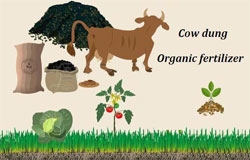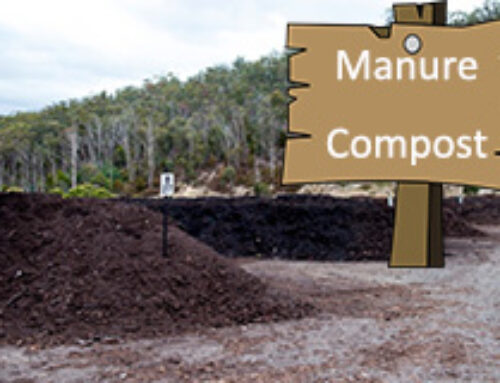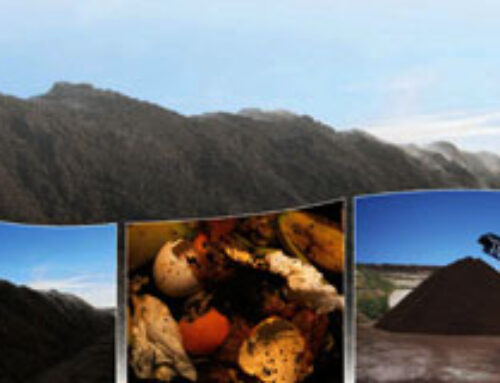It’s very easy to see that the growth of meat and milk production is driven by the growth in demand from the table of per capita consumption of meat and milk. The increasing consumer demand has encouraged the rapid development of the cattle farming industry. As the cattle farming scale enlarges day by day, the quantity of cow dung has become larger and larger. According to the report, the manure produced by one cattle per day equates to about 5%-6% of its weight, in other words, a cattle with 450kg weight can excrete about 25kg manure per day on average, then there is more than 9000kg on for one year. In general, all types of cattle produce large amounts of manure: milk cows(62 kg/day), bulls (42 kg/day), beef cows (37 kg/day), steers (26 kg/day), heifers (24 kg/day) and calves (12 kg/day), so the quantity of cow dung from a cattle farm with certain scale is very huge.
| Region | Per capita meat consumption(kg)1 | Per capita meat consumption(kg)2 | ||||
| 1983 | 1993 | 2020 | 1983 | 1993 | 2020 | |
| China | 16 | 33 | 60 | 3 | 7 | 12 |
| Other East | 22 | 44 | 67 | 15 | 16 | 20 |
| Asia3 | ||||||
| India | 4 | 4 | 6 | 46 | 58 | 125 |
| Other South | 6 | 7 | 10 | 47 | 58 | 82 |
| Asia4 | ||||||
| Southeast Asia5 | 11 | 15 | 24 | 10 | 11 | 16 |
| Developing world | 14 | 21 | 30 | 35 | 40 | 62 |
| Developed world | 74 | 76 | 83 | 195 | 192 | 189 |
| 1Meat includes beef, pork, mutton, goat, and poultry carcass weights; 2Milk is a cow and buffalo milk and milk products in liquid milk equivalents; 3HK, Macau, Mongolia, North Korea, South Korea; 4Afghanistan, Bangladesh, Bhutan, Maldives, Nepal, Pakistan, Sri Lanka; 5Brunei, Cambodia, East Timor, Indonesia, Laos, Malaysia, Myanmar, Philippines, Singapore, Thailand, Vietnam |
||||||
For instance, agriculture is still one of the main sources of national income in Thailand, contributing to 11% of the GDP, thereinto, livestock plays an important role in the agricultural sector, accounting for 22% of agricultural GDP (Office of Agricultural Economics, 2014), while cattle raising has been identified as 1 of 14 main products in Thai agriculture, which brings an enormous quantity of cow dung. In Vietnam, cattle farming is an important industry in the livestock sub-sector, being the third largest industry after pigs and

Without proper disposal, cow dung would cause a series of issues to the environment and even become a direct threat to human and livestock health. It generates lots of greenhouse gas – methane, not only seriously restricting the sustainable development of the cattle farming industry, but also having an adverse impact on climate change. The untreated manure would heavily pollute surface water, underground water, surrounding air, and soil, bringing big hidden trouble and pressure on environmental protection. Therefore, proper disposal of cow dung is extremely urgent.
Currently, the most common and valuable processing method is to turn cow dung/manure into sellable organic fertilizer. Cow dung is a derived product from wastes produced by cattle, providing high levels of organic materials, and is rich in nutrients, including about nitrogen, phosphorous, and potassium as well as many other essential nutrients. According to the data, daily cow dung contain 12.9% DM and excretes a total of 0.15kg N, 0.04kg P, and 0.08kg K. Moreover, cow manure also contains high levels of ammonia that can almost kill the growth of pathogens. Once raw cow dung is composted by a professional compost turner, it can provide lots of benefits to the garden and organic farm, which makes cow manure a very popular and useful raw material for organic fertilizer production.
Cow Dung Waste Management – How to Process it into Quality Organic/Compost Fertilizer?
As one of the most important sources to prepare effective bio/organic fertilizer, the processing method of cow dung organic fertilizer is first to collect the cattle residue. Heavy cow manure should be mixed with organic substances like vegetable waste, garden debris, dead leaves, sawdust, wood ash, hay, straw, etc. The mixed cow dung is then subjected to better composting and fermentation via A compost turner machine. 
Composting of Cow Manure
Cow manure should not be used before composting because fresh cow dung with dangerous bacteria might hurt crop roots, and it also contains grass or weed seeds that would lead to havoc for plant growth. Hence, cow dung needs to rot — turning into a more flexible compost in the process that can destroy harmful bacteria and kill many microbes and weed seeds. There are some useful tips for cow dung composting:
◇ Select a flat and open location where you can pile up all collected manure. And leave enough space for the compost turner machine to turn piles breezily.
◇ If the moisture of fresh cow dung is up to 60% – 80%, it is necessary to make dewatering, which might need a solid-liquid dewatering machine – specially designed for manure separation as well as for dewatering, assisting in lowering the water content in fresh cow manure.
Watch the working video of the manure dewatering machine:
◇ There are three main composting techniques for cow dung, including windrow composting(piling cow dung in long rows/windrows), groove-type composting, and cabin composting. Please consider the investment cost, composting scale, composting quality and efficiency, land area, operation ability, and weather effect when choosing composting method. For instance, with piling cow manure in long rows (like 50-150 meters, about 2 meters in width and 1m in height), a windrow compost turner would be needed for continuous turning operation because the windrow composting method is suitable for processing large volumes of cow manure.
◇ The composting and fermentation extent can be estimated according to compost color, volume, leach liquor, CN ratio, and humification coefficient. To be specific, mature compost has brown or dark brown color due to the obvious increase of ammonium nitrogen content. Its volume would shrink by 1/3~1/2 than the original piles after full fermentation. Besides, adding clean water into mature compost (the ratio of water and compost should be 1:5-10), then mixing, the color of leach liquor would assume faint yellow after 5 minutes of waiting. And the CN ratio of mature compost is about 20-30:1 while its humification coefficient is around 30%.
Granulation of Cow Dung
After thorough composting, cow manure has become harmless, but because of the low total nutrient and drawback of being difficult and costly to transport, the compost can only be used as a part of base fertilizer and cannot flow into the market for sale as commercialized products, all of which limit the application ranges and using effect. And cow dung cannot provide sufficient nutrients to promote maximum growth and optimum forage quality. Therefore, it’s essential to turn cow dung compost into granulated organic fertilizer through the following granulation process, creating a potential new source of revenue and making this process a win-win proposition.
Cow dung granulation is a method of agglomerating manure into a dry product known as granules, pellets, or agglomerates, which requires that cow dung should contain about 45%-55% water content so as to produce granular manure fertilizer. Here, Whirlston recommends a disc pan granulator for improving the efficiency and quality of the final product. This machine provides control through variations in speed, incline, and constant rotating and spraying mechanism, producing more dense and rounded granules.
Benefits of Cow Manure Composting Organic Fertilizer
※ With satisfactory NPK content, cow dung organic fertilizer after composting and granulation can eliminate harmful ammonia gas and pathogens, add a large amount of organic matter to the soil, and supply plant nutrients.
※ It is an important input for maintaining and enhancing soil fertility, which can grow up the healthy vigorous plant, and improve agricultural productivity and crop output, which is a need of developing nations, such as Vietnam, Thailand, and the Philippines, etc. So the application of cow dung organic fertilizer in a proper and sustainable way can enhance not only the productivity of crop yield but also reduce disease incidence caused by a wide range of plant pathogens including bacteria, fungi, and nematode species.
※ What’s more, making cow dung into organic fertilizer is conducive to environmental protection by greatly reducing foul smell, air pollution, and mosquito and flies harm caused by cow manure.





